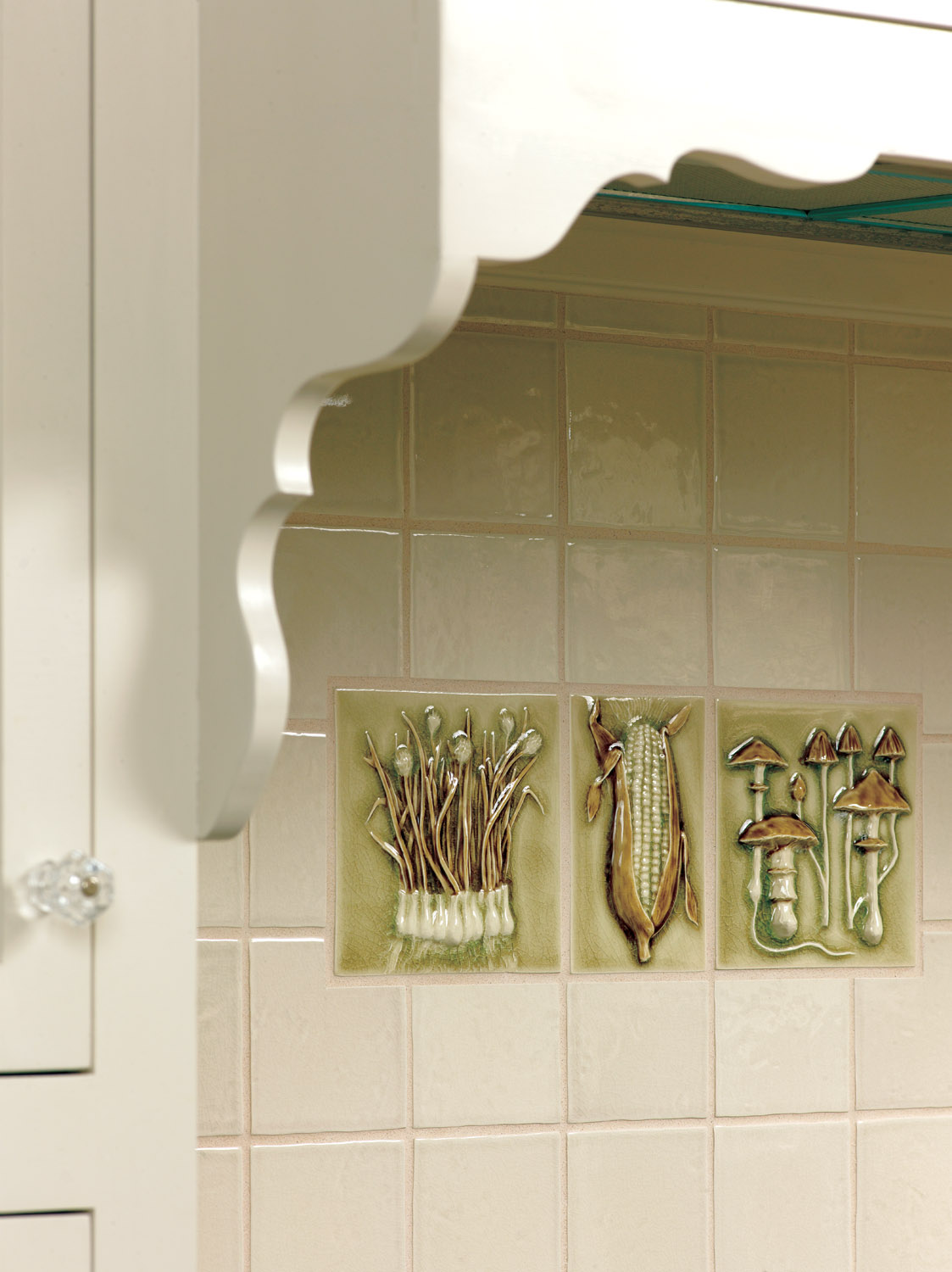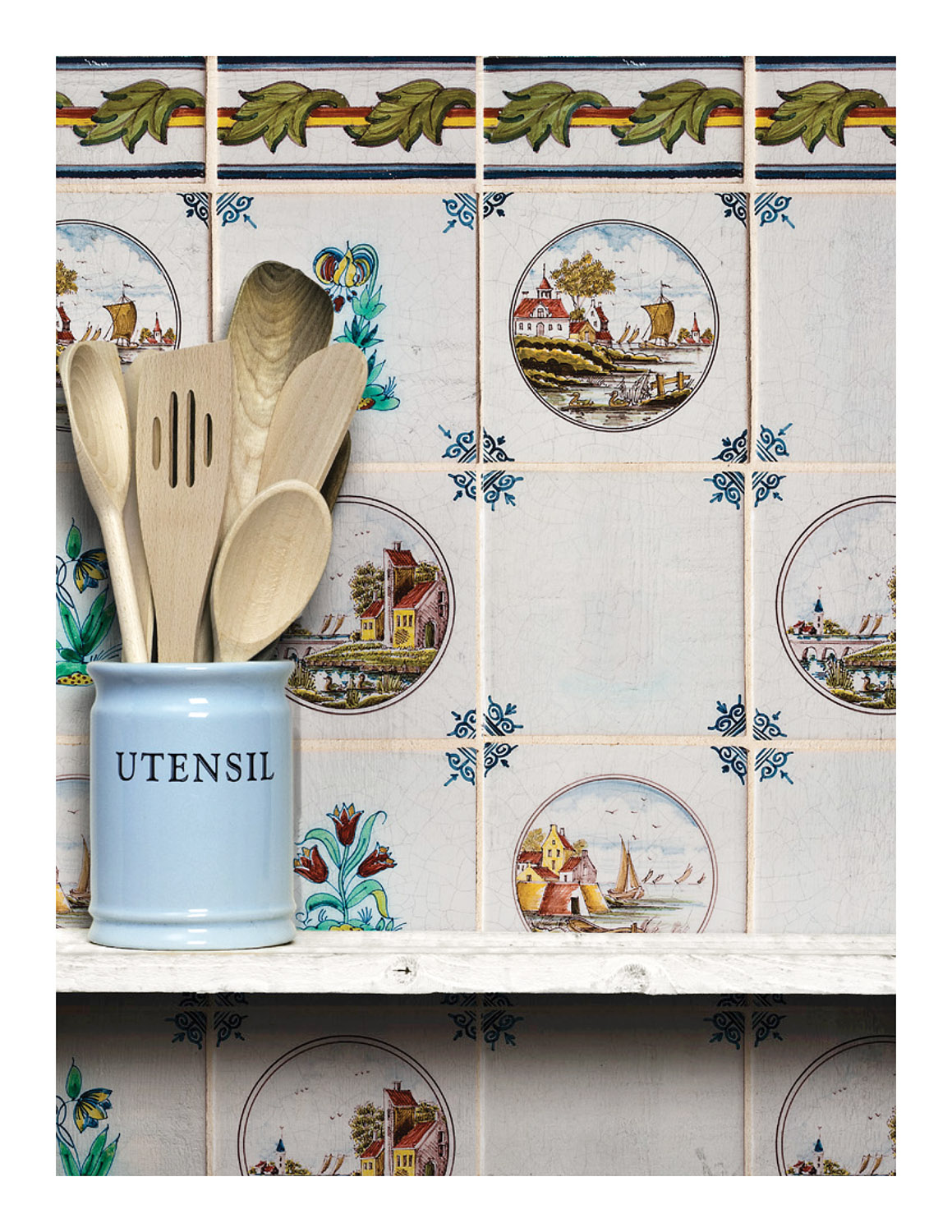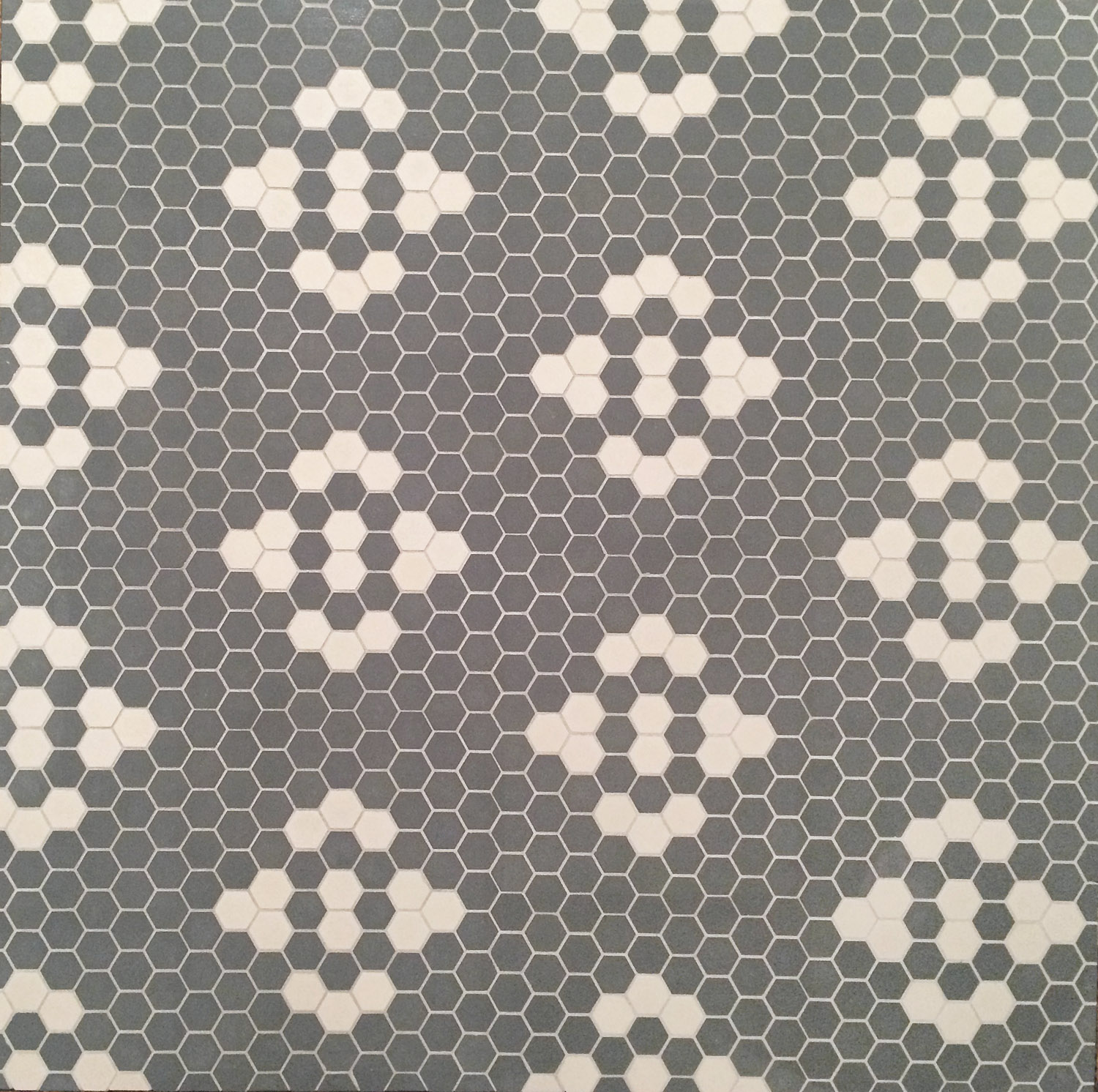THEN AND NOW
Hand-painted relief decos from Pratt & Larson accent a backsplash of plain field tiles in a new kitchen for a 1910 Colonial Revival house. (Photo: Gridley + Graves)
With the revival of tile-making comes a revival of historically inspired installation design, too. To those familiar with the use of tile in the past, the rooms on this page may look like survivors from an earlier era. The white bathroom could be in an early-20th-century house; the purple-walled bath in a Jazz Age apartment; the fireplace surround in a California bungalow. Yet all were designed in the past 20 years. Indeed, those new to tile may find these installations bold and modern.
A dip into the archives reveals that tile was used in ways both utilitarian and decorative—in all periods. Flamboyant examples proliferated in the golden age of American tile-making, ca. 1910 until 1940—not all of it typically Arts & Crafts, as many assume. White mosaics and earthy amber and green tiles belong to this period, but so do brilliant Spanish-Moorish tiles and storybook Moravian tiles made by Mercer in Pennsylvania.
BY STYLE, BY REGION, BY ERA
Authentic, Dutch-made tile is available through Country Floors and others.
Subway tile had a long run, as did floor mosaics and the four-inch pastel tiles ubiquitous in mid-century ranches. Other tile installations were peculiar to a time or place. As you design a new installation, take into account the architectural context. An Aesthetic Movement tile fireplace surround is so very different from a spare Arts & Crafts or Batchelder example. Each complements other treatments to create a recognizable style.
Region plays a huge role. The brilliant colors of California tile evoke the Southwest, where they are compatible with the area’s heritage—and also with the climate: exterior stair risers lined in tile might fare poorly in a place where winter brings repeated freeze–thaw cycles. Still, such tile would be welcome inside a Mediterranean Revival house, even on the East Coast.
Check out our Everything TILE page
Tile may point to an era: white subway tiles used with dark grout in a turn-of-the-century scullery; blue-and-white Dutch tiles in a 300-year-old British country house.
Shown above: hex tiles. Mosaics extend to penny rounds, octagons, squares—and endless layout patterns. Heritage Tile
Mosaics are tiles of 2″ x 2″ or smaller—which may be used to create a larger pattern (called a mosaic). The tiles, including designs for borders, most often are pre-mounted to make them easy to install. White with black accents was long a standard; color mosaics date back to ca. 1900–1920s. Grout color is critical and integral to the overall design; grey tones are the most prevalent and forgiving.
GLOSSARY OF TILE TERMS
- cuerda seca A tile-making method using a waxy mineral mix to create a barrier to separate glazes.
- deco A decorative tile featuring a distinct pattern or design, or relief.
- encaustics Long-wearing tiles with an inlaid pattern produced from different colored clays layered into depressions in a mold.
- geometrics Made using the same method as encaustic tiles, but without a pattern; colored blocks are typically square or triangular.
- grout Specialty mortar product used to fill joints between tile units, creating a water-repellent surface. Not to be confused with caulk.
- Hispano–Moresque A style blending historical Spanish and Islamic influences including brilliantly colored Persian and Isnik designs. Popularly re-interpreted by dozens of Southern California tile makers in the 1920s and ’30s, most famously Malibu Potteries.
- listel / listello A narrow border, used as a linear design element, primarily on walls.
- mural Compositions where each tile is one piece of the overall picture.
- panel A linear composition creating a vertical or horizontal mural, often seen in fireplace surrounds.
- scenic tiles Those that picture a vignette, such as a landscape or figure (e.g., a knight on horseback). May be part of a mural or panel; especially popular in the 1910s–20s.
- tube lining Also called Cuenca-style tiles, those made with thin lines of clay that form basins to separate different glazes (think of cloisonné.)
- unglazed tile Dense tiles without a surface glaze. They have good slip-resistance, but require sealing.







